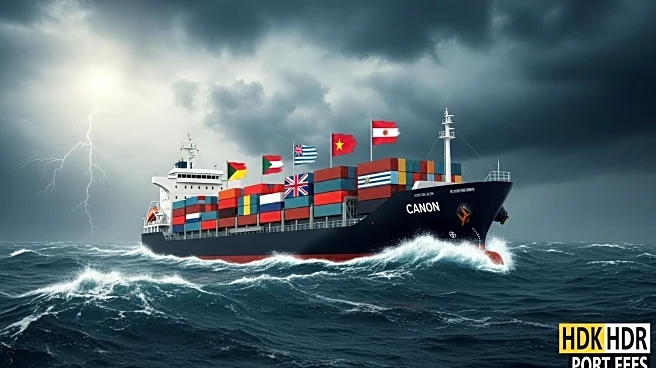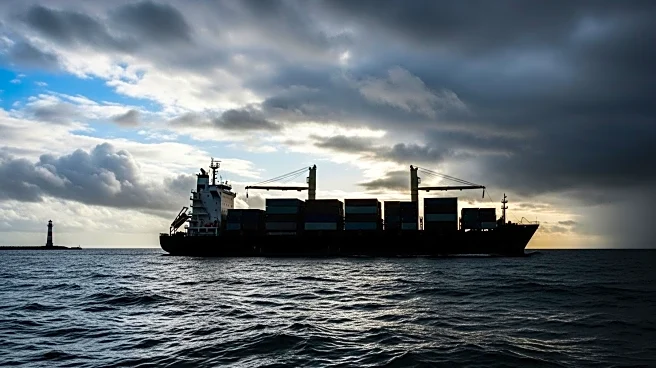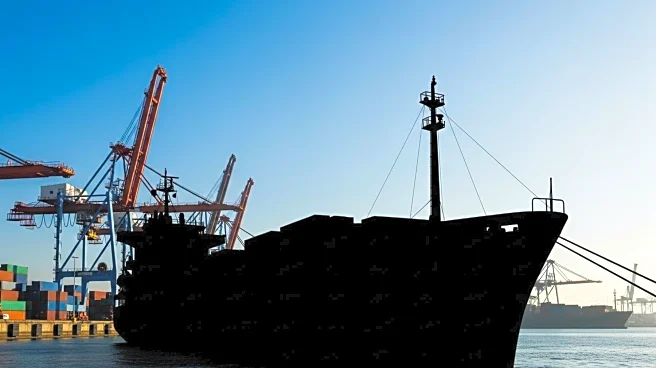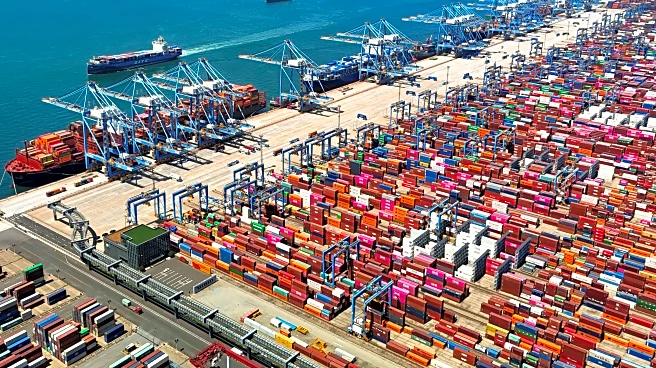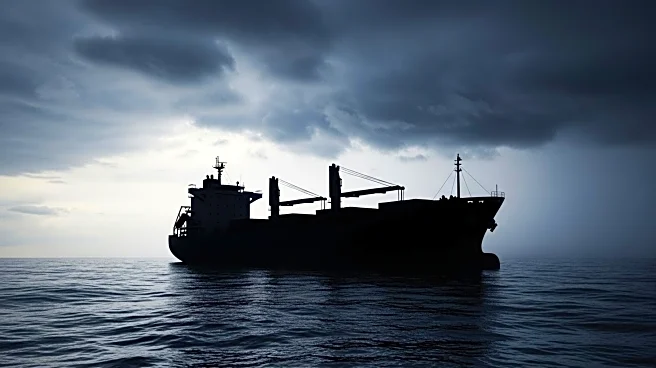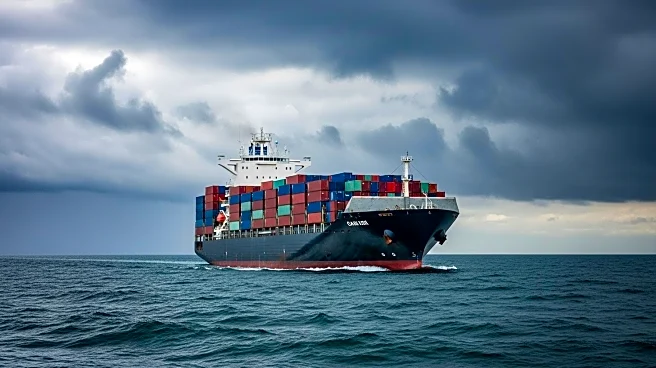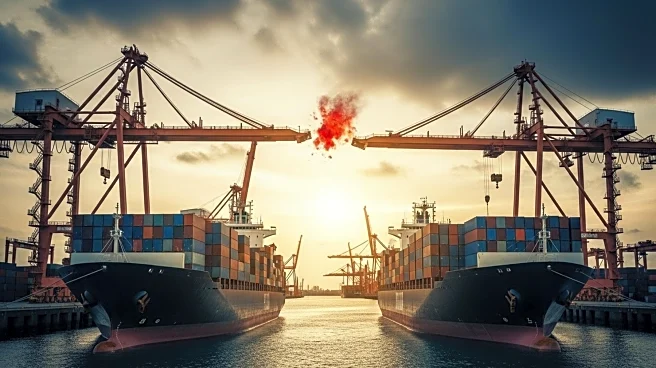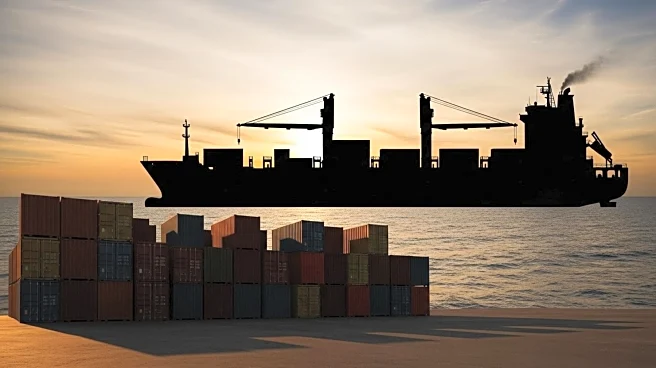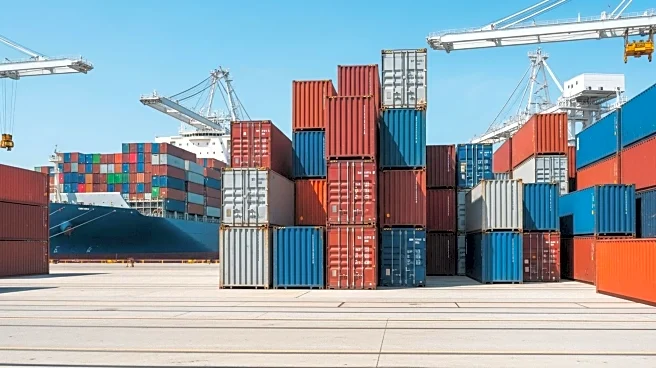What is the story about?
What's Happening?
The Office of the United States Trade Representative (USTR) announced port fees targeting Chinese maritime vessels, effective October 14, 2025. This decision follows a 180-day grace period intended to allow vessel owners and operators to adjust their operations. In response, the Chinese Ministry of Transport (MOT) declared its own fees on vessels with U.S. connections, mirroring the USTR charges. These fees apply to vessels owned or operated by U.S. enterprises, organizations, or individuals, as well as those with significant U.S. equity involvement. The announcement has caused turmoil in the tanker market, with many vessels already en route to China potentially affected.
Why It's Important?
The imposition of reciprocal port fees by the U.S. and China highlights ongoing tensions in international trade relations. These measures could significantly impact maritime trade between the two countries, potentially increasing transportation costs and limiting available vessels for Chinese imports. The fees may also affect public shipping companies listed on U.S. stock exchanges, given the broad criteria for vessels subject to the charges. The situation underscores the geopolitical jostling between the U.S. and China, with potential repercussions for global shipping and trade dynamics.
What's Next?
The implementation and enforcement of these fees remain uncertain, with potential exemptions for vessels already en route to China. The tanker market is currently 'frozen,' awaiting clarity on the fees' impact. The situation may lead to higher transportation costs for Chinese imports and further freight rate increases. The Chinese Ministry of Transport is expected to issue detailed implementation measures soon, which will provide more insight into the future of maritime trade between the U.S. and China.
AI Generated Content
Do you find this article useful?
